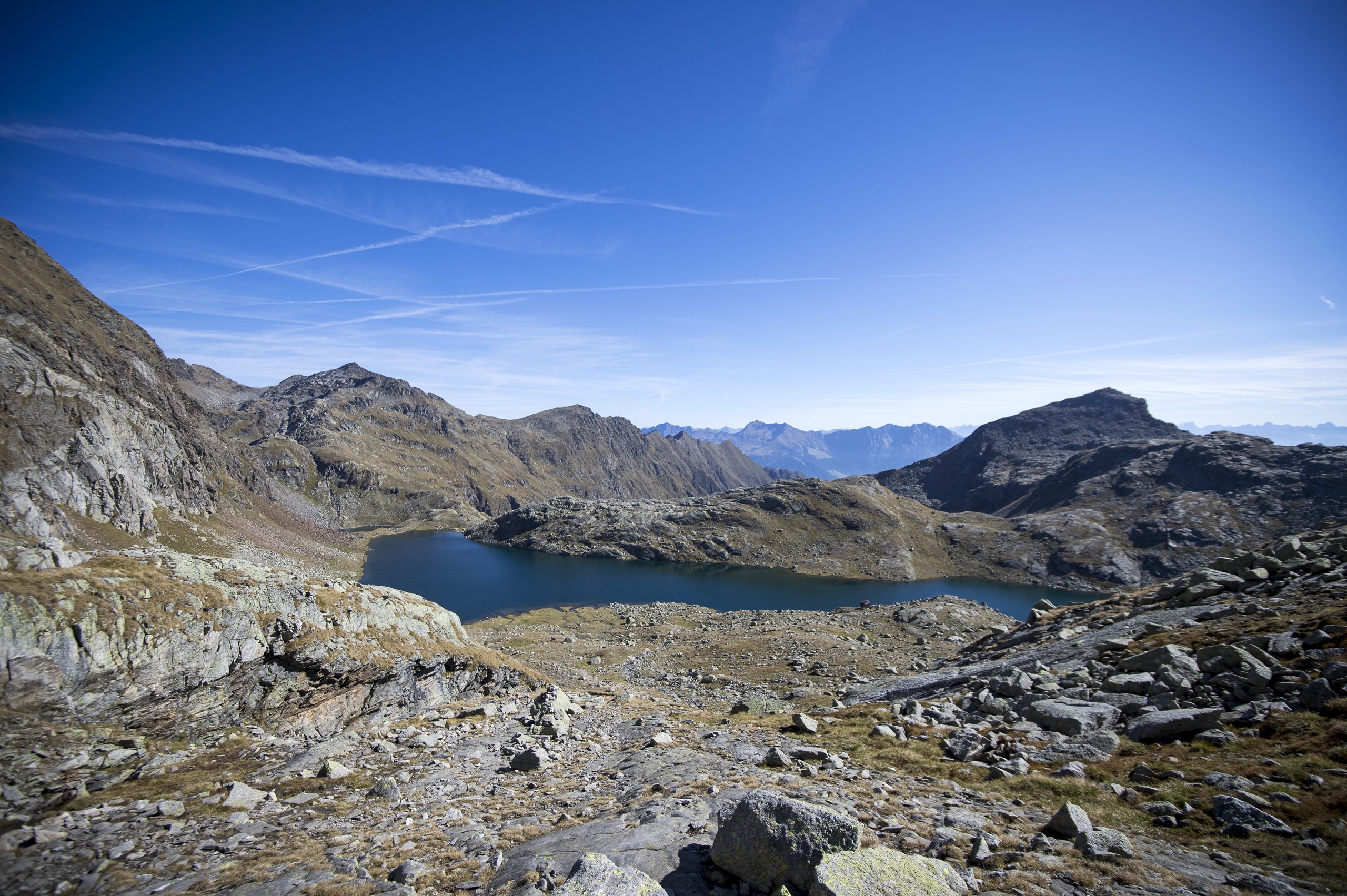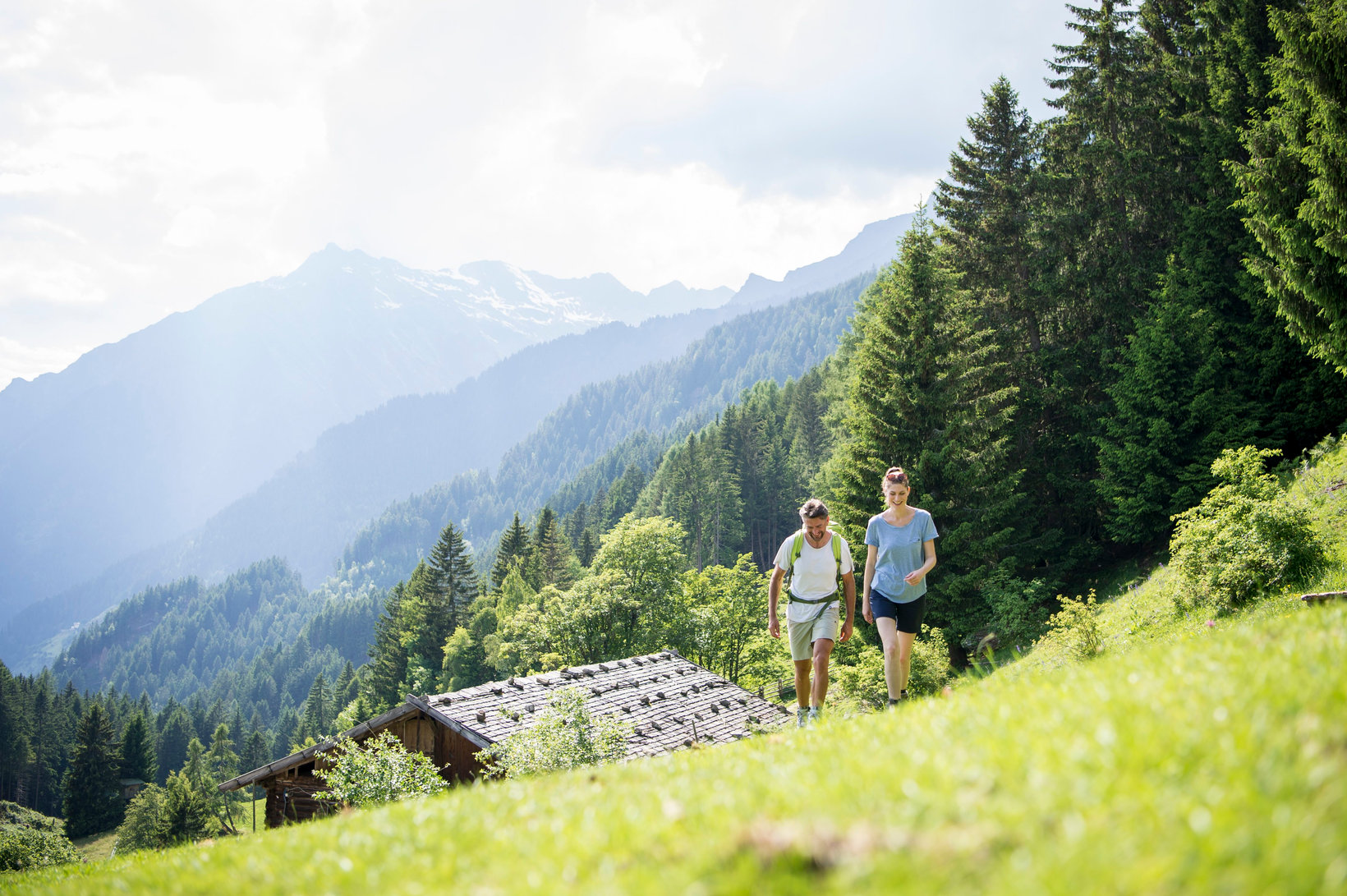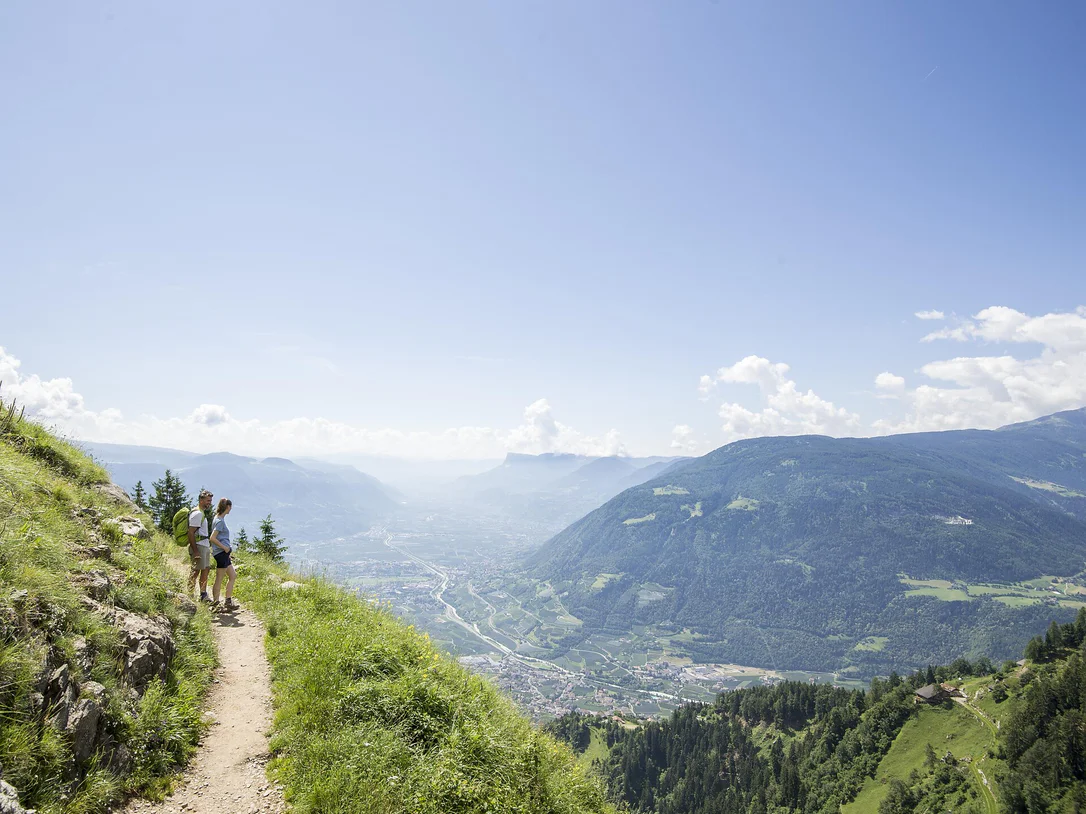The Meran valley basin has the Texelgruppe range to thank for its mild climate because the peaks offer protection from the cold north. The most striking peaks, the Lodner and Hohe Weisse, stand out against their surroundings with their bright light marble layers. The ten Spronser Seen lakes, South Tyrol’s highest-altitude collection of lakes, sparkle like gemstones at the heart of this fascinating mountain landscape.
The powerful Partschins waterfall is an impressive natural spectacle, especially during the period of snowmelt in spring. The water flows more gently in the Waale canals. The sunny slopes of the Vinschgau valley and Burggrafenamt can be explored on foot along this centuries-old irrigation system.
The Schnalser and Gurgler mountain crests, both of which form part of the Ötztal Alps, border the nature park to the north with striking peaks such as the Finailspitz or Similaun and the Granatenkogel, renowned for its fist-sized pieces of granite.
Anyone wishing to go walking in the Texelgruppe Nature Park over a few days can tackle the Meran High Mountain Trail.














